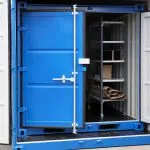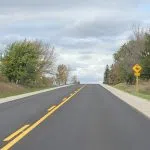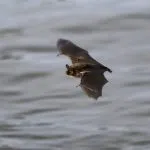Aspen Valley Wildlife Sanctuary (AVWS) is asking people to not feed wildlife.
For many, feeding wildlife is an enjoyable way to connect with nature. But the sanctuary says little do they know that this well-intended practice can lead to serious problems for species such as squirrels, raccoons, deer, and bears, as well as for the individuals feeding the animals, their properties, and pets.
“Every summer, we hear from an increasing number of people with the best of intentions,” says Jan Kingshott, Director of Animal Welfare at Aspen Valley Wildlife Sanctuary. “While it may seem harmless to feed wildlife, that’s the furthest from the truth.”
Wild animals become habituated when humans feed them.
When wildlife is repeatedly fed by (and exposed to) humans, it becomes habituated. Animals lose their healthy sense of fear, and may stay closer to people and roadways, which are associated with food. This is dangerous and can result in hundreds of animals being killed every year. Furthermore, wildlife can be startled and feel threatened if people come too close. When threatened, animals might kick or bite, injuring people, property, or pets.
Wild animals have specialized diets and can become malnourished or die if fed the wrong foods.
Malnutrition is the inadequate intake of any of the required nutrients and can occur even in wildlife that is being fed large amounts of food. Case in point: deer have sensitive digestive systems that cannot readily adapt to supplemental food sources. Deer have actually died of starvation with full stomachs because their digestive systems were unable to process the supplemental food.
Wild animals crowding at feeding sites increases the risk of animal-to-animal disease transmission.
More animals die from disease-related ailments than from starvation. The provision of natural or non-natural food at a specific location can result in large congregations of wildlife in a small area. This has the potential to increase disease transmission – either directly between the animals or indirectly via the feed station.
Wildlife Needs Guardians:
We all want to do what’s best for wildlife, and there are actions that can be taken.
· Refrain from feeding wildlife.
· Dismantle feeding stations.
· Put garbage out the morning of collection using wildlife-proof bins.
· Keep pet food indoors.
· Pick up fallen fruit from trees in your back yard.
· Enjoy wildlife from a distance.
· Learn as much as you can about wildlife.
Consider a Guided Wildlife Tour:
“We are excited to be offering guided tours once again,” says Linda Glimps, Executive Director, Aspen Valley Wildlife Sanctuary. “It’s a unique opportunity to see our permanent wildlife residents, hear their stories, and learn how to live in harmony with wildlife.”
AVWS has moose, coyotes, bears, and a wolf pack in residence, to name a few. Sadly, the majority of these animals came to AVWS as a direct result of human interference. Many were born or raised in captivity and were later seized by authorities who then approached AVWS to provide them with forever homes.
Help AVWS Feed Wildlife in its Care:
As a not-for-profit, the sanctuary is solely dependent on the generosity of donors, and full-and part-time volunteers, to care for our permanent residents, in addition to the 900+ injured and orphaned animals that we rehabilitate and release each year.
“Year to date, we have taken in 845 injured and orphaned animals,” says Glimps. “On average, it costs $40 to $125 a week to feed each of them, and some species, including moose and beavers, remain with us for one to two years before they are ready to be released.”
Visit www.aspenvalley.ca to discover the many ways to support the animals in their care, and learn how to “keep wildlife wild”.












